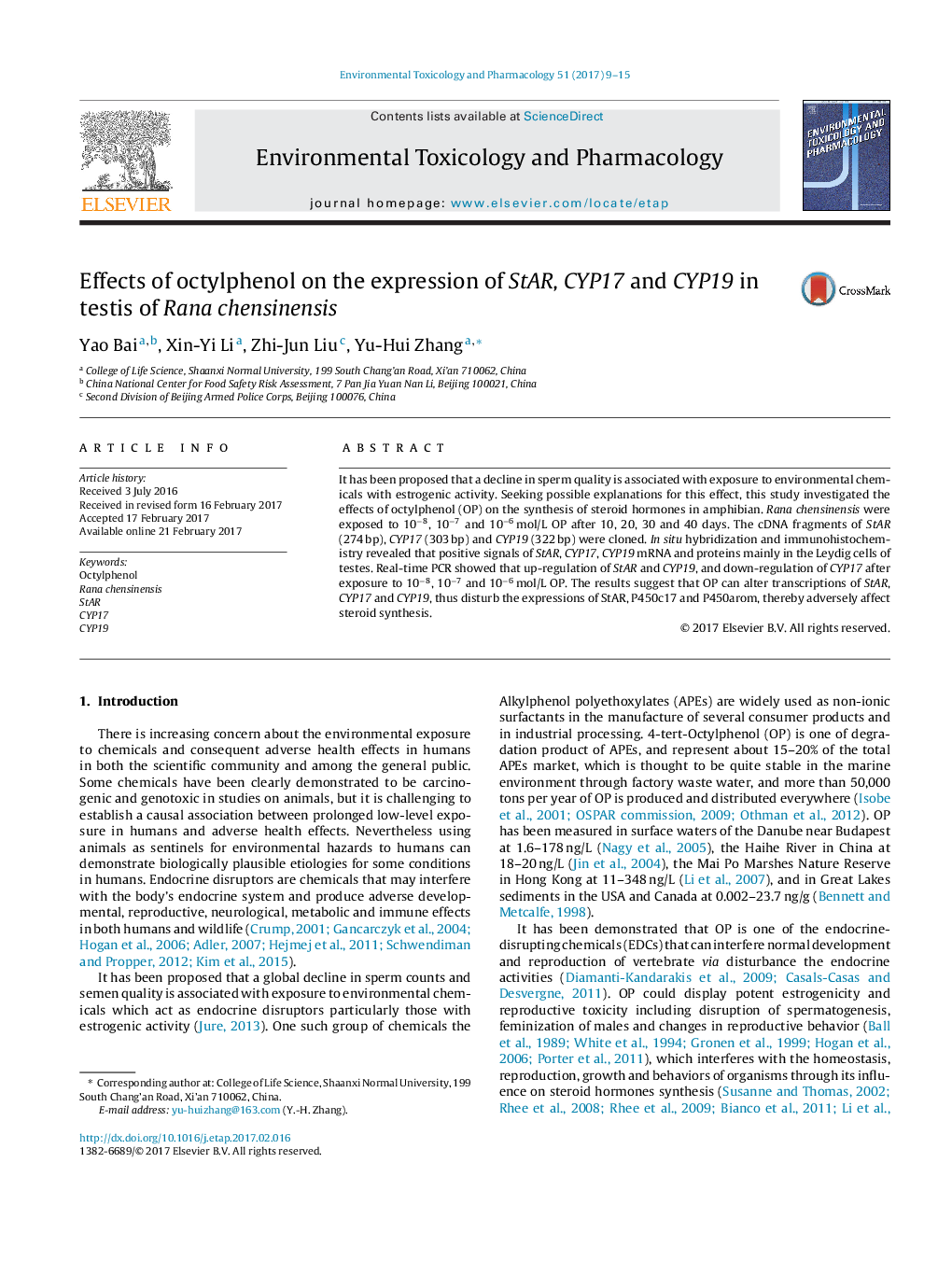| Article ID | Journal | Published Year | Pages | File Type |
|---|---|---|---|---|
| 5559802 | Environmental Toxicology and Pharmacology | 2017 | 7 Pages |
â¢The cDNA fragments of StAR, CYP17 and CYP19 of Rana chensinensis were cloned.â¢OP could up-regulate StAR and CYP19, and down-regulate CYP17 expressions.â¢OP alter transcriptions of StAR, CYP17 and CYP19, affect related protein expression.
It has been proposed that a decline in sperm quality is associated with exposure to environmental chemicals with estrogenic activity. Seeking possible explanations for this effect, this study investigated the effects of octylphenol (OP) on the synthesis of steroid hormones in amphibian. Rana chensinensis were exposed to 10â8, 10â7 and 10â6Â mol/L OP after 10, 20, 30 and 40 days. The cDNA fragments of StAR (274Â bp), CYP17 (303Â bp) and CYP19 (322Â bp) were cloned. In situ hybridization and immunohistochemistry revealed that positive signals of StAR, CYP17, CYP19 mRNA and proteins mainly in the Leydig cells of testes. Real-time PCR showed that up-regulation of StAR and CYP19, and down-regulation of CYP17 after exposure to 10â8, 10â7 and 10â6Â mol/L OP. The results suggest that OP can alter transcriptions of StAR, CYP17 and CYP19, thus disturb the expressions of StAR, P450c17 and P450arom, thereby adversely affect steroid synthesis.
